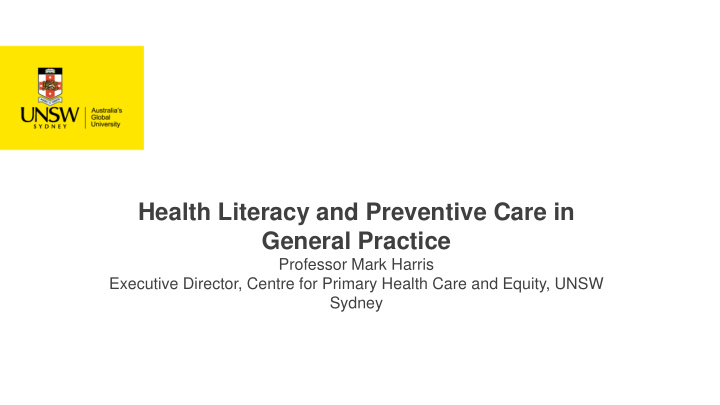



Health Literacy and Preventive Care in General Practice Professor Mark Harris Executive Director, Centre for Primary Health Care and Equity, UNSW Sydney
Preventive care in general practice • 87% of population see a GP at • Change in complex health behaviours least once a year. Less than & genetic and physiological risks 1% of the population do not • Multiple sources of information of “have” a GP. variable quality and multiplicity of • Two thirds of GPs in South and pathways to interventions Western Sydney consult in a • Conflation of motivation and health language other than English. literacy. • GPs often know the context of other conditions, treatments, family and see people across the lifecycle.
What are What are we we tryin trying to g to achie achieve ve? Individual health literacy Health literacy environment Health Skills/Abilities Demands/complexity Literacy Source: Parker R. Measuring health literacy: Why? So what? Now what? In: Hernandez L (ed), Measures of Health Literacy: Workshop Summary, Roundtable on Health Literacy. 2009
Clinical Strategies: 5As Assess Advise/agree Assist Arrange Risk & low health Advice, goal setting, Referral navigation Follow up literacy teachback
Organisation anisational al • Team work: PNs and CHWs, interpreters • Linkages with other local services, programs and organisations • Information systems: prompts, recall
ARC Study in Ottawa Canada
So what needs to be done? • Continue to extend the PHC workforce and its roles – nurses, allied health, interpreters and CHWs • Funding and organisation systems to facilitate flexible patient and community centred PHC • New methods for quality improvement
Recommend
More recommend